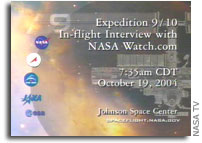Exploration: Being There
 Surviving Denali, David Schuman, Haverford College Alumni Magazine
Surviving Denali, David Schuman, Haverford College Alumni Magazine
“There’s another saying in mountaineering, “The mind remembers, the body forgets.” Climbing Mt. McKinley was the hardest thing I’ve ever done, almost like running a marathon for three weeks straight. It was a life-changing experience. Back at work behind the desk, I couldn’t help but think of all the things one could do in life if only the day job didn’t get in the way. I was surprised at the large number of co-workers who followed our expedition and wanted to hear stories, experiencing vicariously the adventure we enjoyed.”
Deadly Ascent, NOVA/PBS (Schuman’s climbing partner John Grunsfeld’s earlier attempt on Denali)
“As [NASA] Chief Scientist, I get to spend a little time in the House Science Committee room in Congress, probably more than I’d like. There are some things written on the wall that I think are really fantastic, and every time I sit there, thinking, What am I gonna say? or What are they gonna ask me?, I look up on the wall and read, “For I dipped into the Future, far as human eye could see; saw the vision of [new] worlds, and all the wonder that would be.” That’s from Tennyson. Again, this is something that I think drives us all.”
“Chiao: … The similarities, I think, would be planning. There is a lot of planning involved, getting the right gear, doing the right kind of research to determine what kind of equipment you are going to need, thinking through the whole plan, and then executing it. I think there are a lot of similarities between other types of exploration and the kinds of things we are doing. Some of the other things that are very similar – if you are out in the middle of nowhere – and you’ve got your team and your equipment, you’ve got to be able to deal with any contingency that comes up – any kind of repairs that need to be made so that you can get back to where you need to go. So I agree, there are a lot of parallels.”
 Keith Cowing’s Devon Island Journal 18 July 2003: Wind
Keith Cowing’s Devon Island Journal 18 July 2003: Wind
“It is just after 10:00 PM and I am sitting in the Science Tent. Outside the winds are blowing constantly with constant gusts over 50 KPH. The wind chill is -1C. The winds are so intense that the entire tent shakes constantly – including the desk I am sitting at. More than once the tent door has blown open. Next to this tent is the large Planetary Society dome tent which houses the NASA Ames Research Center airplane team. The tent was starting to move a bit, hinting at a predilection to become airborne, so Base Camp manager John Schutt anchored the tent to two 200 kg ATVs.”
 Kevin Hand’s Antarctic Journal 1 March 2005
Kevin Hand’s Antarctic Journal 1 March 2005
“Now given that we’re a bunch of NASA tech geeks, a caf isn’t a caf unless you have your laptop out and can get some work done while you sip your mocha-frappa-soy-whatsit-latte. Needless to say we did get power into the tent and often had a full suite of laptops up and running, collecting and analyzing data. On a few occasions I think Rho even managed to link up to his server via the Iridium satellite phone. The BP Cybercafe was up and running in full force.”










